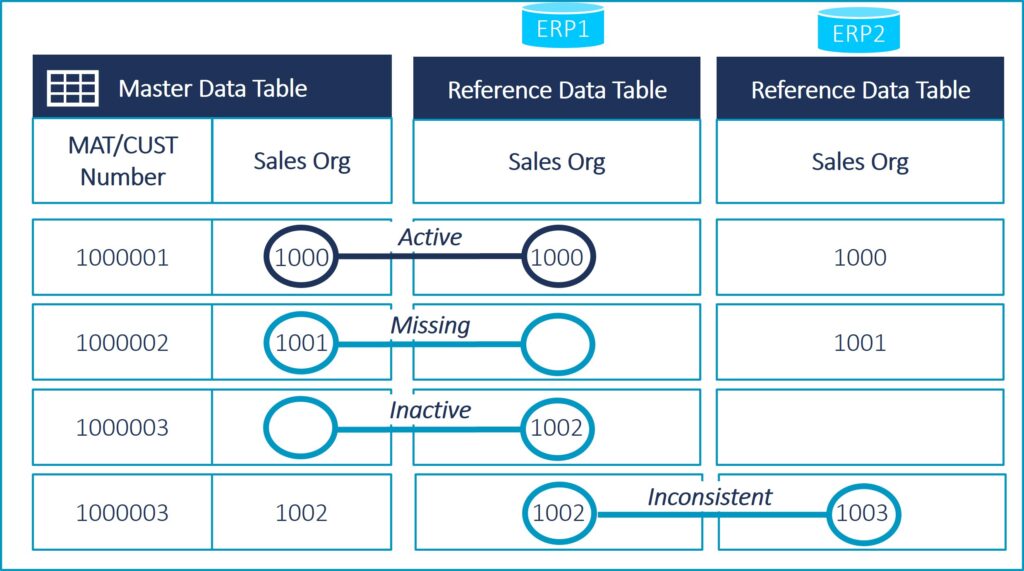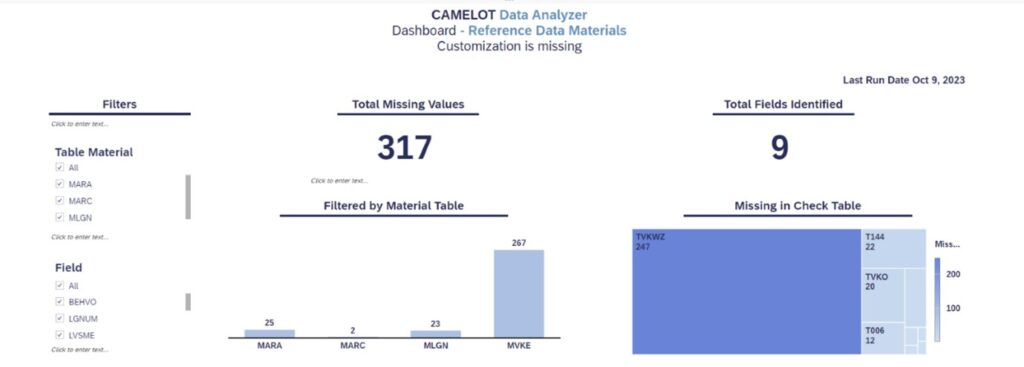
The Power of Automation in Data Migration
Automation is a practical solution to speed up and optimize the entire data migration process

We are currently witnessing an era in which massive amounts of data are flooding the business landscape, making its management a challenging task. While there is already a lot of work going into the topic of master data management, reference data is often neglected. Improper management of reference data can result in legal issues and delays in digital transformation initiatives, such as the transformation to SAP S/4HANA. Find out how to keep control of your reference data and maximize the potential of your data.
What do we understand by reference data? Reference data is used in master data and transactional data and therefore within all your business processes. Reference data plays an essential role within your organization as it represents the customizing of the SAP system regarding your specific requirements for all business processes. Unproperly managed reference data can cause significant problems:
To illustrate the importance of reference data for your business, let us take an example of material and customer master data. Both have the attribute sales organization. The reference data defines the allowed values for this attribute. If sales organization 1001 is missing in your reference data but is present in your master data, the migration of this data to S/4HANA will fail. Moreover, your sales department that belongs to sales organization 1001 will not be able to use this material and customer in their transactions.

To keep control of your reference data, Camelot launched an enhancement for the Camelot Data Analyzer with the new release Q4 2023. The extension offers validation of reference data tailored specifically to SAP solutions. It focuses on material master data and business partner master data and ensures synchronization of customizing across the system landscape. The extension is available as a Software-as-a-Service and helps you to identify deficiencies in your reference data management. It addresses three main pain points:

The functionalities of the Camelot Data Analyzer for Reference Data are available independently. You can choose the solution that best suits your individual requirements.


It is important to wisely choose the time when to start improving your reference data. Reference data remains relatively stable over time; cleaning it on a weekly or monthly basis is an unnecessary use of resources. Based on our experience, there are three key business instances where reference data management and leveraging the Camelot Data Analyzer for Reference Data can add the most value to the business:
If your business reached the point when it is the time to address and improve reference data, there are two possible ways. The first is that you decide to implement these activities internally. For example, you can develop your own tool for reference data management or even do it manually. Each approach demands careful consideration of various factors: the choice of IT platform, licensing costs, objects in scope, technical implementation, human resources, internal expertise, aggregation and visualization of the results. While executing these tasks in-house is feasible, it might not be worth it. Given that reference data management is mostly performed once, the investment of time and resources outweigh the benefits, especially if there are other projects to focus on.
The second way is to go for a ready-to-use solution, developed for reference data management, such as the Camelot Data Analyzer for Reference Data. Our tool requires the minimum technical knowledge and time investment. These are the ways it can help you:
It is common for reference data to remain unchanged over the years, leading to inconsistencies and outdated values. This poses a significant risk to new digital initiatives within a company. Tackling issues in reference data management is critical to any SAP S/4HANA transformation. With the Camelot Data Analyzer for Reference Data, an easy-to-use SaaS application is available that will help you enhance data quality, boost system performance, and get you ready for your system transformation.

Automation is a practical solution to speed up and optimize the entire data migration process

Discover how you can streamline your financial master data management and reengineer financial processes with SAP MDG Finance.

Whilst it seems straightforward to carry out either a blood transfusion or a data migration, the actuality proves far more complex.

In this blog article, Camelot introduces you to the main principals of Demand-Driven Supply Chain Management.